Allotments, a garden show, bird feeders and teasels
There are lots of photos this week, with ideas from my visit to a garden show and an allotment site.
🌱 I'm Sally Morgan, an organic gardener and botanist who loves to experiment. Here you can read about matters relating to climate change, sustainability, organic gardening, growing veg and biodiversity, helping you to become a
climate savvy gardener 🌱☀️🌧️❄️🌡️
I hope you have all had a lovely week and managed to fit in plenty of gardening! I have been putting in the hours to catch up with sowing and to get the transplants in the ground. There are never enough hours at this time of year.
BBC Gardeners World Spring Fair at Beaulieu in the New Forest
I was invited to talk on climate resilient allotments and I was delighted that a number of keen allotmenteers were in the audience. Wandering around the show, there were some excellent show gardens, alongside trade stands with lots of temptation on offer [and in case you are wondering, yes, I succumbed. I bought a large Yucca rostrata which is very architectural].
I particularly liked the show garden, Aspects of Nature, designed by the students at Capel Manor College in London. It highlighted the difference in planting between a sun-baked south facing patio, which showcased plants that thrive in the sun (Crimson bottlebush, eucalyptus and Yucca gloriosa, plus succulents, sempervivums, and sedums) and a north facing aspect which featured a stumpery of decaying wood, shade loving ferns, and fungi. I liked the plentiful supply of nooks and crannies for minibeasts too. There was so much attention to detail and many ideas to take away.
Make a Metre Matter
Garden designer, Pip Probert, supported by the National Vegetable Society, had created a number of one metre gardens packed with lots of imaginative ideas for growing your own food. Proof it’s possible to grow veg in the smallest of spaces.
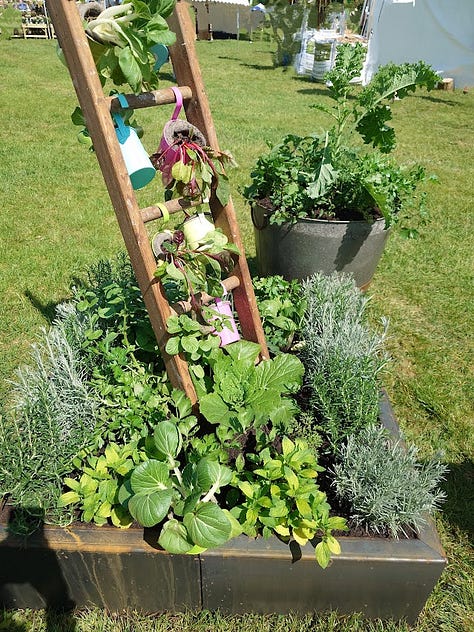
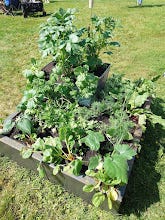
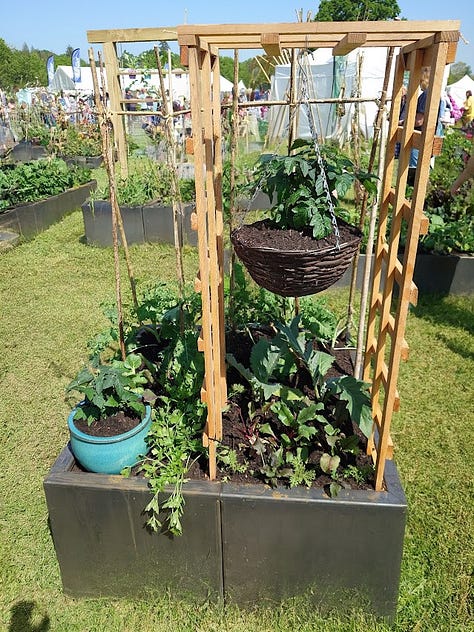


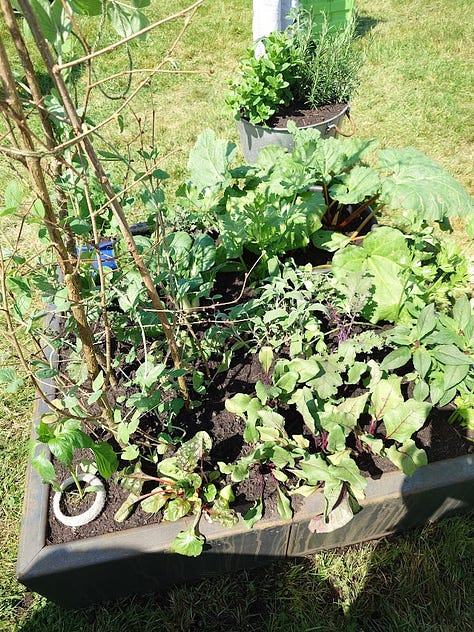
If you want more ideas like this, please have a look at Mark Ridsill Smith’s substack (@markverticalveg). Mark has so many ideas for growing veg in containers on patios and balconies.
Hotwell and District Allotment Society
On Saturday, I travelled to Bristol to give a talk to the Hotwell and District Allotment Society. I was talking at the shop on their Alderman Moore’s site, a large site right next to the Ashton Gate Stadium and with far reaching views. The Society is one of Bristol’s two independent allotment associations and it manages 6 sites in West Bristol with more than 600 plots ranging in size from very small to large.
After my talk (another on climate resilience) I was taken on a tour by Birgit Muller (Sustainability and Nature Lead for the Society) and several other allotmenteers. I just love walking around allotments as I know I will come away with lots of ideas and I was not disappointed. I loved the roundhouse which is a meeting space beside the pollinator garden. The pollinator garden is part of the project to boost the area of pollinator friendly plants across all the allotments and the community. And there was a substantial dead hedge too.
There is a new composting area where Generation Soil is collecting household and business food waste and turning it into nutrient rich compost, using bokashi methods. They also run workshops to help communities learn more about regenerative gardening practice. If you live in Bristol, do take a look at their website.
There were some innovative water harvesting ideas, impressive broad beans, and everywhere there were fruit trees and flowers. Birgit show me her plot which I loved – just my type of allotment with lots of colour at the moment, thanks to the living mulch of forget-me-nots. Like me, Birgit leaves them in the ground until she needs the space and they create a mat over the surface of the soil protecting it from sun and rain, as well as bringing in pollinators. There were plenty of white dead nettles, alliums, flowering brassicas (good for bringing in parasitic wasps), wood chip paths and more.

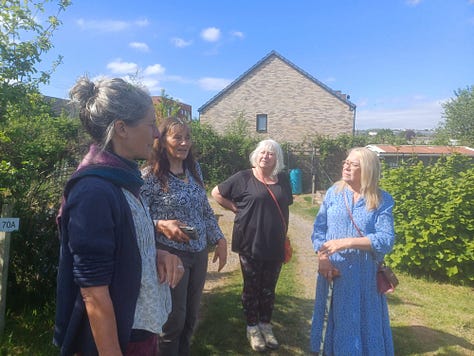
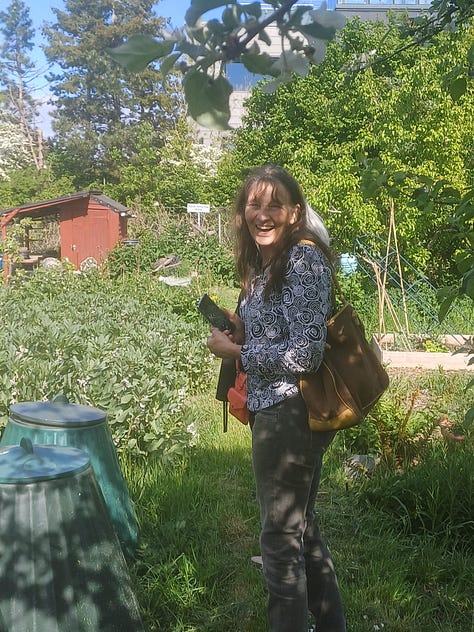
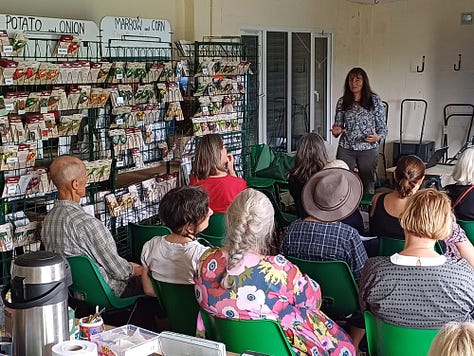
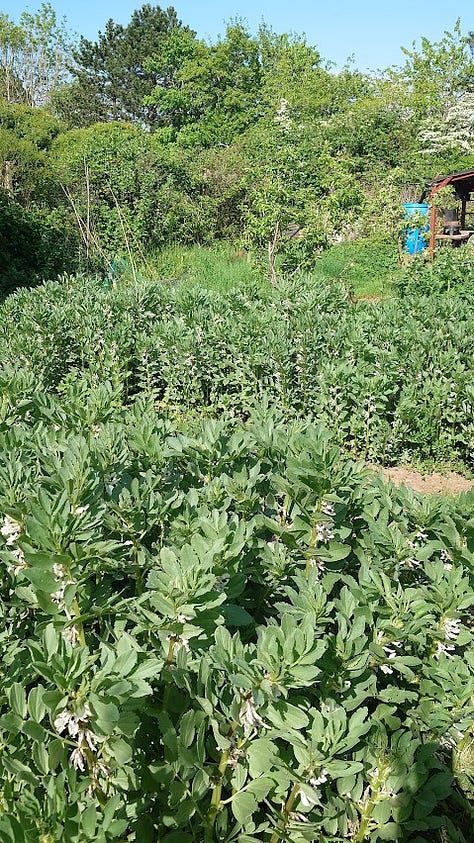
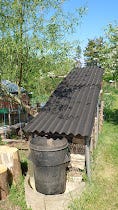
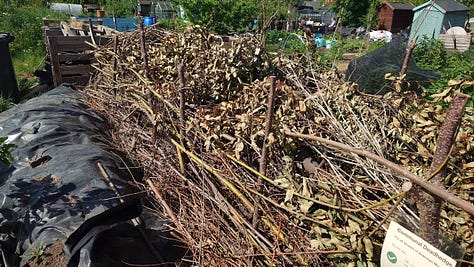
Bird feeders, disease and teasels
There were plenty of comments on last week’s post on bird feeders and how we can grow more seed ourselves. Sarah May Grunwald (@sarahmaygrunwald) alerted me to the fact that sugar feeders in North America are behind the death of many hummingbirds. I did a bit of research and hummingbird feeders which are filled with sugar water can spread Aspergillosis, Avian pox virus, Candidiasis, and Salmonellosis. The recommendation is to empty the sugar solution and clean daily.
It’s a dilemma as bird feeders attract birds into the garden and we love to see them up close. I was discussing this with Melissa Harrison. Melissa has given up bird feeders too, and instead scatters mealworms on the ground. I have been thinking about teasels as they stand through winter and definitely bring in the finches. I am wondering if it’s possible to grow them in a large pot and move the pot near the window so I can enjoy the antics of the visiting birds. I have found some teasel seedlings so will give it a try…..
So that’s it for this week. Next week there won’t be a weekly post as I’m in Italy but I will post my Resilience article, which this month on Walls (internet connections permitting!)
Happy gardening
PS If you enjoyed reading this post, please click the ‘like’ button at the bottom, it really helps make my posts more visible on the SubStack app. Thank you xxx
Talks in 2025
27 May East Mendip Garden Club at Oakhill
28 May Thruxton Garden Club
5 June Teignmouth Garden Club
10 June Frome Selwood Horticultural Club
1 July Sherston, near Malmesbury
9 July Bramzero, Calne
21 July Bride Valley near Dorchester
1 September Wootton Bassett
2 September Marshfield
4 September Dilton
18-20 September Yeo Valley Organic Garden Festival





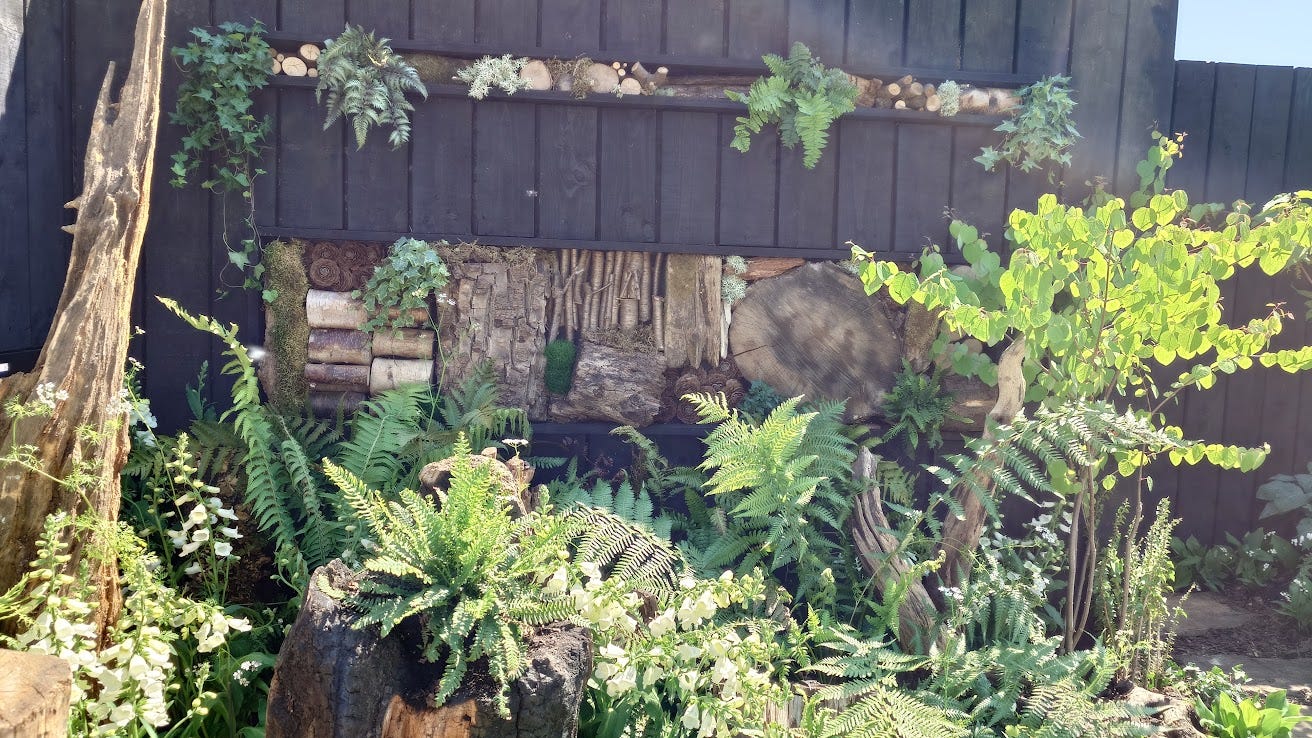




Fun read. Seems we have similar ideas but I‘m not so successful.
Those allotments look lovely.
Wrt the teasel, if it won't grow in a pot you could always cut some of the heads down and then tie them up outside your window for the birds to feed on.